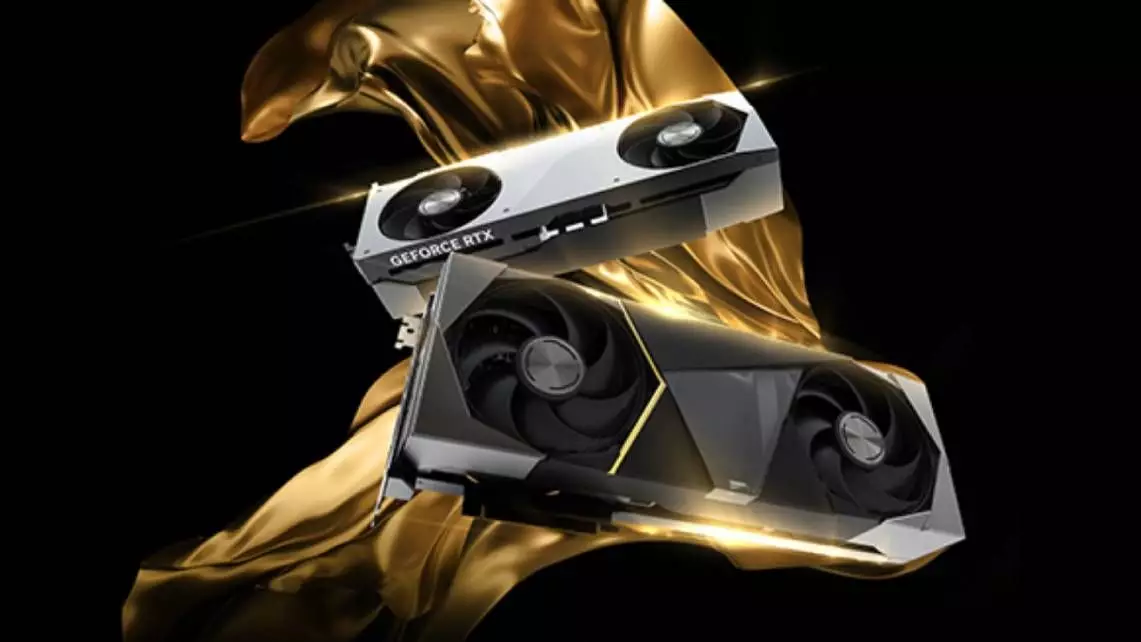The Consumer Electronics Show (CES) of 2025 has undeniably made waves in the PC gaming community, primarily due to the launch of Nvidia’s latest graphics cards, the RTX 50-series. Touted as a significant upgrade from its predecessor, the RTX 4080, the RTX 5090 has captured attention not just for its performance jump but also for its pricing strategies and innovative cooling solutions. With costs ranging from $999 to an astounding $1,999, Nvidia seems to be pushing the boundaries of what gamers can expect from a GPU.
The architectural leap from the RTX 5080 to the RTX 5090 signifies back-to-back enhancements in core count and overall performance. According to Nvidia, the RTX 5090 houses a staggering 170 Shader Multiprocessors (SMs), which is a 33% increment over the 128 found in the RTX 4090. This surge in capability not only promises better gaming experiences but also sets new standards for future graphics cards. Nvidia claims that users can expect double the performance of the RTX 4090, primarily attributed to advancements in Deep Learning Super Sampling (DLSS) technology, which has seen its fourth iteration.
Such ambitious enhancements also raise questions about the thermal management of these powerful GPUs. The Founders Edition, notable for its compact dual-fan configuration, contrasts sharply with the elaborate cooling solutions being rolled out by AIB (Add-In Board) partners. Will this dual-fan system suffice for a GPU that’s potentially doubling the performance benchmarks? The answer will likely unfold as real-world tests are conducted after the initial launch.
One of the most glaring trends emerging from the RTX 5090’s announcement is the aggressive competition among manufacturers to bolster cooling systems. Gigabyte, for instance, introduces a four-fan setup in its Aorus Master variant and even incorporates a unique “Screen Cooling Plus” feature to increase airflow. This innovation indicates a market shift where traditional cooling setups are no longer deemed sufficient, presenting an intriguing development for both manufacturers and consumers. Meanwhile, MSI is taking it a step further with its Special Edition model, which boasts an impressive five-STORMFORCE fan cooling system.
What’s particularly fascinating is how industry giants are now placing greater emphasis on fan configurations over simple aesthetics. MSI’s design incorporates a blend of intake and exhaust systems, while previously, some designs merely added extra fans to improve visual appeal. This change suggests that manufacturers prioritize performance and reliability over superficial design choices, which could be a game-changer for cooling technologies in the high-performance GPU market.
The stark price range for the RTX 5090 is likely to invoke a variety of reactions among the gaming community. While the base model’s $999 entry-level cost may seem palatable, the $1,999 premium version caters to a niche market willing to invest heavily in top-tier hardware. How this will affect sales volume and market dynamics remains to be seen. The reluctance of some gamers to invest in high-end hardware could push Nvidia and its AIB partners to reevaluate their pricing strategies if market demand doesn’t meet expectations.
Moreover, the disparity between the Founders Edition and the AIB models raises further questions. As Nvidia’s baseline cooling solutions adopt a more conservative approach, will consumers gravitate towards those elaborate multi-fan setups? The disparity in performance output and thermal efficiency may become a focal point in discussions among early adopters and industry analysts.
The Nvidia RTX 5090 graphics cards herald an evolutionary leap in gaming graphics performance, stirring excited anticipation tempered by legitimate concerns surrounding pricing and thermal management. With advanced cooling solutions becoming the focal point, Nvidia and its partner manufacturers are shaping a competitive landscape that directly affects consumer choices in the high-performance market. The CES 2025 announcements have laid out a tantalizing roadmap for PC gamers, with possibilities that could redefine the standard for what high-performance graphics truly entails. As the broader community digests these developments, the performance of the RTX 5090 cards in the marketplace will determine whether these innovations will be celebrated as milestones or critiqued as missed opportunities.

